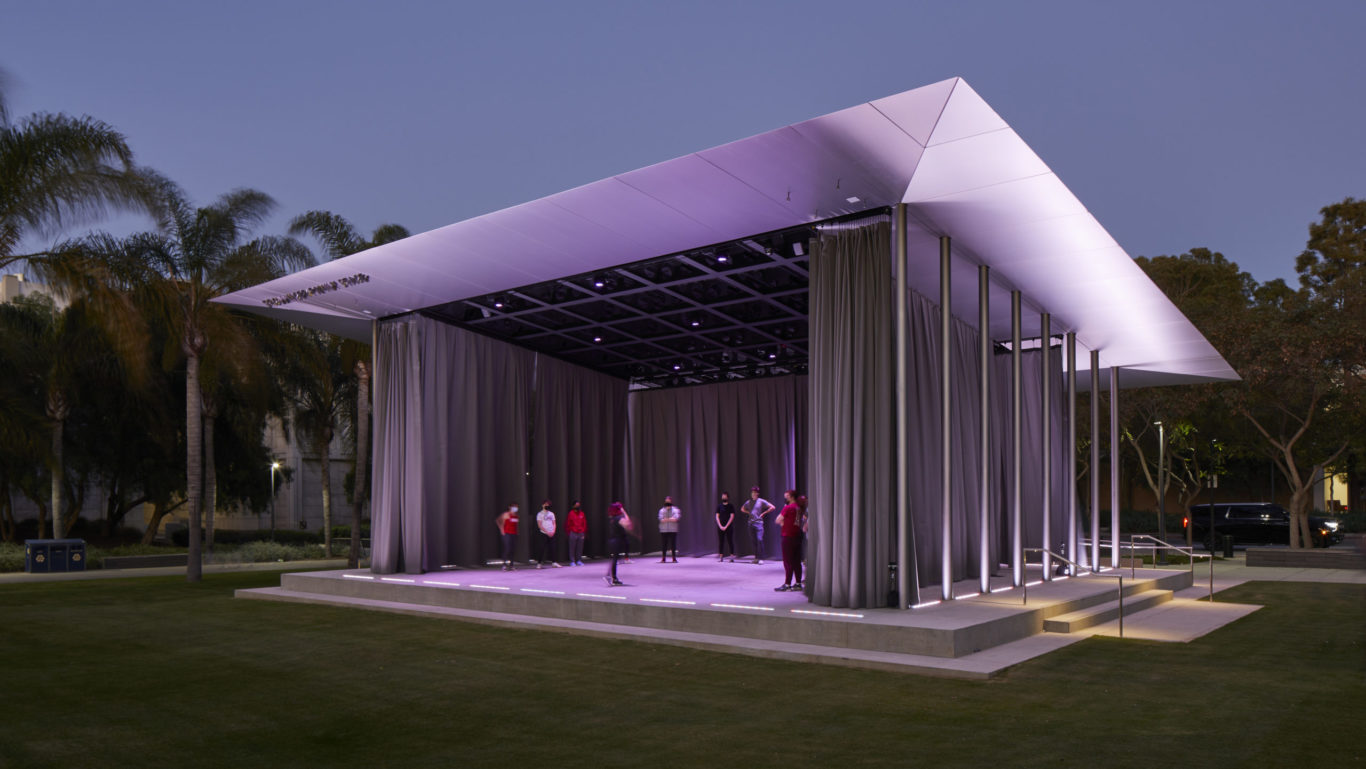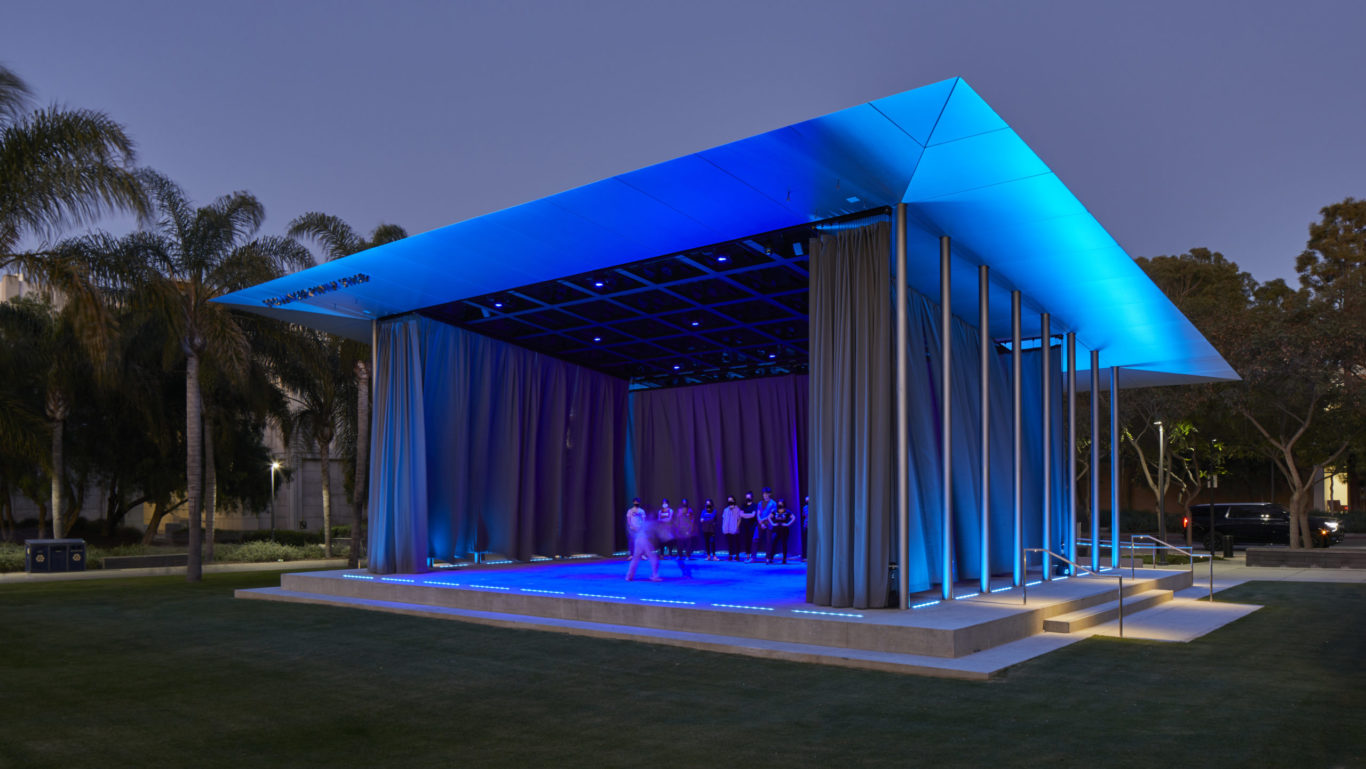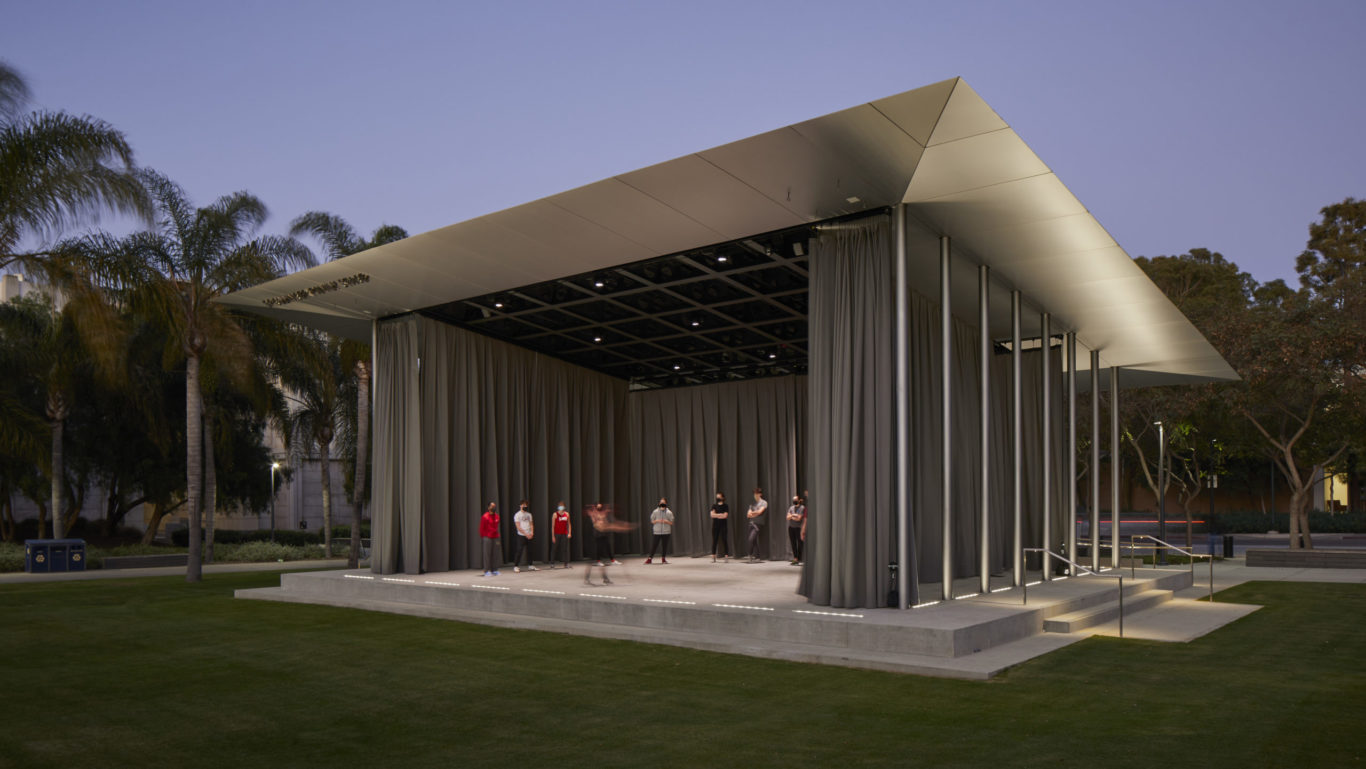Loyola Marymount University – School of Film and Television, Undergraduate Building
Los Angeles, California, United States



As universities adapt to a changing environment, programmed outdoor spaces are an intelligent, healthy, and cost-effective solution. This permanent, open-air stage is a multipurpose venue for the campus and its broader community.
Located on a central green of the Loyola Marymount University campus, the Drollinger Family Stage is designed as a multipurpose venue that can be used for performances, events, and classes. With a minimal design and flexible curtain system, the stage can be easily adapted to any of the traditional theatrical configurations: in-the-round, proscenium, or thrust-stage. The space can also be fully enclosed for private classes and rehearsals.

Though the stage was commissioned by the university’s College of Communication and Fine Arts (CFA), it is intended to be a versatile space for the entire community. It has been engaged as a podium for civic announcements, a platform for student fitness classes, and a venue for myriad campus activities. An inaugural event on the stage was the 2022 Kente Graduation Celebration for students of African descent. The CFA’s annual Shakespeare on the Bluff event finds its permanent home on the Drollinger Family Stage. When not engaged for performances, classes, or ceremonies, it becomes an informal student gathering space.

Los Angeles is a high seismicity zone, which made the design objectives for the stage—flexibility and visual simplicity—particularly challenging to achieve. For maximum visibility from all sides, the structural columns needed to be thin, while also carrying the mass of the roof, the audio-visual systems, and all attendant equipment.
The design team developed an innovative system with a grid of perforated beams in the ceiling, and conduits that run through the structural columns. The entire roof system was shop-fabricated and shipped to the site for installation, which allowed for a high degree of precision and minimal on-site welding.

The form of the Drollinger Family Stage is delicate; its canted roof appears on an open field as a floating plane, defining a shady plaza. A robust audiovisual system is embedded into the roof, which is structured on thin columns. The roof’s metallic cladding was selected to be unobtrusive during dramatic nighttime shows. By eliminating visual clutter, the design enhances the theatricality and versatility of the space.
This programmatic flexibility is possible because of the stage’s minimal structure and discreetly designed electrical and plumbing systems. The stage provides no more and no less than the equipment and framework needed to amplify any staged event.

The design objectives for the stage—flexibility and visual simplicity—were particularly challenging to achieve in Los Angeles, which is a high seismicity zone. For maximum visibility from all sides, the structural columns needed to be thin, while also carrying the weight of the roof, the audiovisual systems, and all attendant equipment. Seismically, they act as a cantilever column system without perimeter beams.
The design team developed a system that synthesized the structural and technical design needs: a grid of perforated beams in the ceiling to minimize structural mass and facilitate system integration, together with conduits that run through the structural columns. The entire roof system was shop-fabricated and shipped to the site for installation, a high-precision process that minimized on-site welding. This meticulously coordinated design allowed the entire steel-framed structure to be erected in a single afternoon.



Los Angeles, California, United States
Los Angeles, California, United States
01/